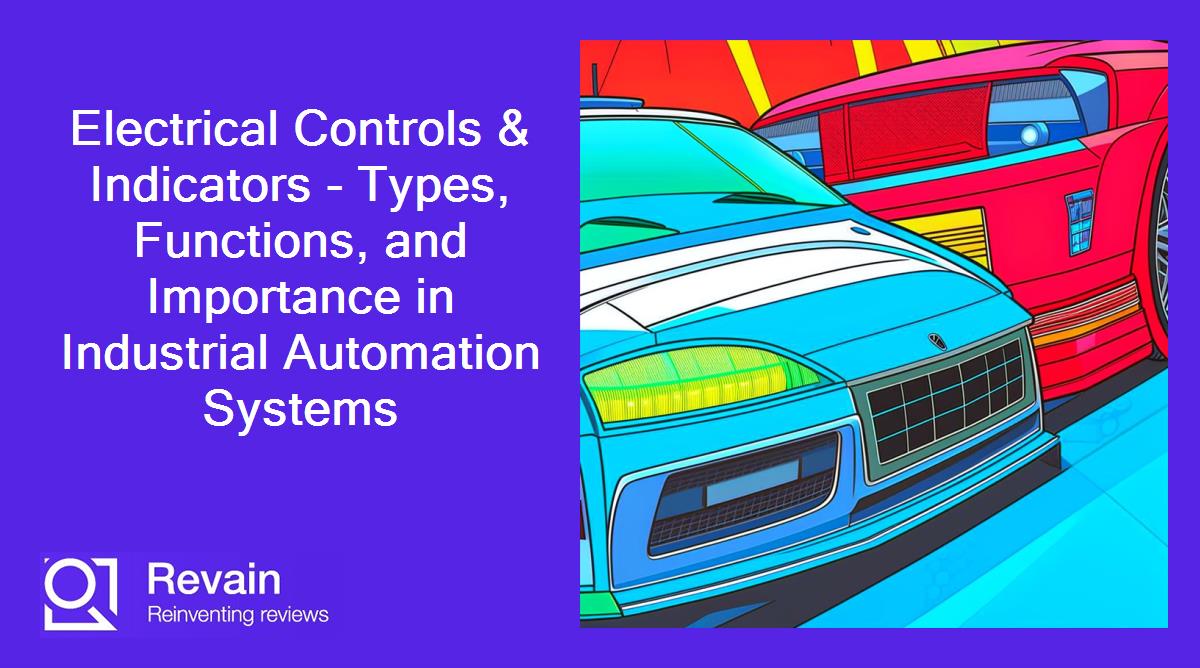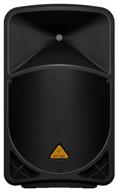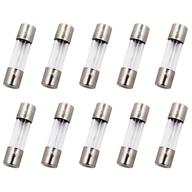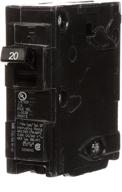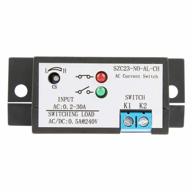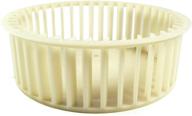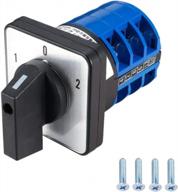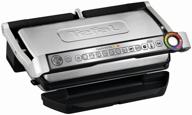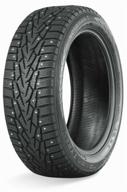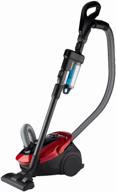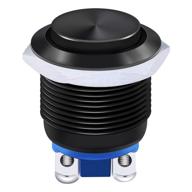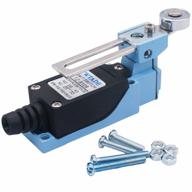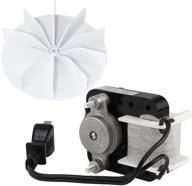The Importance of Electrical Controls and Indicators
Electricity is an essential part of modern life, powering everything from home appliances to industrial machinery. But electricity can also be dangerous if not properly controlled and monitored. This is where electrical controls and indicators play a crucial role.
Another interesting products
What are Electrical Controls and Indicators?
Electrical controls are devices used to regulate or command electrical power in machinery, equipment, and processes. Some common types of electrical controls include:
- Switches - used to turn power on/off or divert it between different circuits
- Relays - automated switches controlled by electrical signals
- Contactors - heavy duty relays used for motor/power control
- Circuit breakers - protect circuits from overload conditions
- Motor controllers - regulate speed/torque of electric motors
Electrical indicators provide visual feedback to operators and technicians to indicate the status of electrical circuits and equipment. Some examples are:
- Pilot lights - miniature lights showing power or fault status
- Alarms - audible/visual alerts when abnormal conditions occur
- Panel meters - analog/digital gauges displaying voltage, current, etc.
- Graphic displays - HMIs showing system/process information
Why are They Important?
Electrical controls and indicators serve several critical functions:
- Safety - Properly designed controls like circuit breakers prevent fires, shocks, and equipment damage.
- Process control - Controls allow precise regulation of electrical power to optimize manufacturing/industrial processes.
- Machine control - Motor controllers reliably switch motors on/off and vary speed/torque.
- Feedback - Indicators provide operators with real-time system status to quickly identify issues.
- Overload protection - Controls like fuses and circuit breakers prevent overcurrent conditions.
In summary, electrical controls and indicators are vital to harnessing the power of electricity safely, efficiently, and reliably in residential, commercial, and industrial applications.
Key Types of Electrical Controls
Electrical controls regulate and direct the flow of electrical power in a wide range of equipment and systems. Some of the most common and important types of electrical control devices are:
Top products in 🔌 Electrical Controls & Indicators
Switches
Switches are simple on/off controls used to start/stop equipment, redirect power to different circuits, or isolate systems for maintenance. Examples include light switches, appliance power switches, and selector switches that route power to backup pumps or generators.
Relays
Relays are electrically operated switches that open or close contacts to control a circuit. They allow electrical signals to switch higher power circuits. For example, a low voltage DC signal can use a relay to switch mains AC power to a motor or lamp. Relays are used to automate and sequence machine control. A common application is starting three-phase motors by sequentially energizing their coils.
Similar products
Contactors
Contactors are heavy-duty relays used to switch motors, heaters, and high current loads on/off. They have strong electromagnets to withstand repeated switching of 15-100A residential/industrial loads. Typical applications include starting/stopping motors, controlling solenoids, and switching power to industrial equipment like ovens or conveyors.
Circuit Breakers
Circuit breakers protect electrical circuits from overloads and short circuits. At home, they trip to prevent overheating wires. In industry, they protect motors, transformers, and other costly equipment. Unlike fuses, circuit breakers can be reset after tripping. Common types include thermal magnetic breakers that trip on overloads or instant shorts.
Motor Controllers
Motor controllers reliably start, stop, reverse, and vary the speed/torque of electric motors. They prevent motor damage by limiting inrush current when starting. Adjustable speed drives offer precise speed regulation. Other features include overload protection, jogging, and emergency stop control.
In summary, these electrical control devices are indispensable in regulating power across residential, commercial, and industrial applications.
Circuit Breakers - Critical Protection Devices
Circuit breakers are automatic electrical switches designed to protect an electrical circuit from damage caused by overload or short circuit. They are indispensable in residential, commercial and industrial electrical systems.
How Do Circuit Breakers Work?
Circuit breakers have a mechanism that detects faults, triggers the contacts to open and interrupt the flow of current. Breakers can be reset to resume normal operation after tripping.
- Thermal magnetic breakers - Have a bimetal strip that bends and trips the breaker when overheated by excess current. Also have an electromagnet that trips the breaker instantly on short circuit faults.
- Magnetic hydraulic breakers - Use an electromagnet and hydraulic piston system. The electromagnet releases the piston to trip the contacts.
Types of Circuit Breakers
- Miniature circuit breaker (MCB) - Rated up to 100A and used in light commercial and residential distribution panels.
- Molded case circuit breaker (MCCB) - Up to 600A and used in commercial and industrial settings.
- Air circuit breaker - Up to 5000A and used for high capacity industrial power distribution.
Applications of Circuit Breakers
- Branch circuit protection - MCBs in homes/offices prevent wiring overloads.
- Motor overload protection - MCCBs in factories prevent motor burnout.
- Short circuit protection - Breakers limit damaging current spikes.
- Equipment protection - Prevent voltage surges from reaching sensitive electronics.
Proper circuit breaker selection requires rating for maximum voltage, current capacity and interrupting rating for available fault current.
Circuit breakers are a critical component of electrical safety in homes, commercial buildings and industrial facilities. They prevent fires, equipment damage and other hazards when electrical faults occur.
Motor Controllers - Precise Control of Electric Motors
Motor controllers are electrical devices that regulate the performance of electric motors used in industrial, commercial and residential applications. They provide safe, reliable and efficient control of motors.
Types of Motor Controllers
- Manual motor starters - Manually operated switches that provide on/off control and overload protection.
- Magnetic motor starters - Electrically operated starters with overload relay protection.
- Soft starters - Reduce inrush current when starting motors to minimize stress.
- Variable frequency drives (VFD) - Continuously vary motor speed and torque for precision control.
Functions of Motor Controllers
- Starting - Start motors by connecting them to power supply.
- Stopping - Disconnect power to bring motor to a stop.
- Overload protection - Trip circuit on overload to prevent motor damage.
- Reversing - Reverse motor direction by swapping polarity of supply connections.
- Speed control - Vary speed by changing power frequency and voltage with a VFD.
Benefits of Motor Controllers
- Soft start capability to reduce inrush current stress.
- Protection from overload, over/undervoltage, phase loss.
- Precision speed and torque regulation with VFD.
- Energy savings from optimizing motor performance.
- Monitoring and diagnostics capability.
Properly selecting and sizing motor controllers is crucial based on motor power, voltage, torque requirements and load characteristics. Motor controllers enhance efficiency, prolong motor life, and provide control flexibility in industrial facilities.
Electrical Indicators - Providing Crucial System Feedback
Electrical indicators are devices that provide visual feedback on the status and performance of electrical circuits and systems. Selecting appropriate indicators is vital for effective monitoring and diagnostics.
Pilot Lights
Pilot lights use miniature incandescent or LED bulbs to indicate status of an electrical circuit. Common types include:
- Power on light - Indicates circuit is energized.
- Status light - Signals a device or process condition.
- Fault indicator - Signals abnormal or alarm condition.
Pilot lights provide inexpensive, real-time visual feedback to equipment operators and maintenance personnel.
Panel Meters
Panel meters accurately display key electrical parameters on control panels and equipment. Common examples include:
- Ammeters - Measure current flow in amperes.
- Voltmeters - Measure voltage levels.
- Power factor meters - Indicate circuit power factor.
- Frequency meters - Measure AC frequency in Hz.
Analog and digital panel meters enable precise monitoring of performance and loading.
Graphic Displays
Graphic displays provide operator interfaces for visualization and control of electrical equipment. Human-machine interfaces (HMIs) and touchscreen panels are commonly used in industrial automation systems.
Advanced indicators like bar graphs, trend charts, and system mimics enable sophisticated status monitoring and diagnostics.
Choosing suitable electrical indicators requires evaluating voltage, current, accuracy, and environmental requirements for a specific application.
Pilot Lights and Signal Lights for Status Indication
Pilot lights and signal lights are invaluable visual indicators that provide real-time status and feedback on electrical and mechanical equipment. They enhance monitoring, diagnostics and safety.
Pilot Lights
Pilot lights are simple miniature light bulbs used to indicate status of a circuit or device. Common types include:
- Power on - Indicates circuit is energized.
- Status - Signals mode or condition of a device.
- Fault - Warns of an abnormal or alarm state.
Incandescent bulbs are low cost but have limited life. LED pilot lights offer longevity and brightness in multiple colors.
Signal Lights
Signal lights are electrical indicators designed for higher visibility and identification. Applications include:
- Panel indicator lights - High visibility status feedback.
- Tower lights - Multicolor stacks for visual alerts.
- Machine/process status lights - Signals machine state.
- Hazard warning lights - Rotating beacon for safety.
Features like brightness, lens shape, lens colors, flash patterns, and IP rating must be selected appropriately for each application.
Proper pilot light and signal light selection provides clear visual identification of equipment status for operators and maintenance personnel.
What Are The Most Popular Products In The "Electrical Controls & Indicators" Category?
Based on the search results, it is difficult to determine the most popular products in the "Electrical Controls & Indicators" category. However, we can provide some insights on the category and some of the products available. The category includes a wide range of products such as programmable logic controllers, control panels, switches, relays, indicators, and other equipment that facilitate the control and monitoring of electrical processes. Some of the products available in the category include motor contactors, solenoid valves, and actuators. Additionally, Amazon and Revain offer reviews and ratings for some of the products in the category.
What Are The Most Popular Brands In The "Electrical Controls & Indicators" Category?
Based on the search results, here are some of the most popular brands in the "Electrical Controls & Indicators" category:
- TWTADE
- Marhynchus
- ohyes
- Reliance Controls
- Fowler
- GASHER
- Agastat - Te Connectivity
It is worth noting that some of these brands offer a wide range of products in the category, while others specialize in specific types of products such as dip switches and time delay relays. Additionally, Amazon and Revain offer reviews and ratings for some of the products in the category, which can help users make informed decisions when choosing products from these brands.
What Are The Top-Rated Products From The Most Popular Brands In The "Electrical Controls & Indicators" Category?
Unfortunately, the search results do not provide a comprehensive list of the top-rated products from the most popular brands in the "Electrical Controls & Indicators" category. However, we can provide some insights on some of the popular brands and their products.
It is worth noting that Amazon and Revain offer reviews and ratings for some of the products in the category, which can help users make informed decisions when choosing products from these brands.






